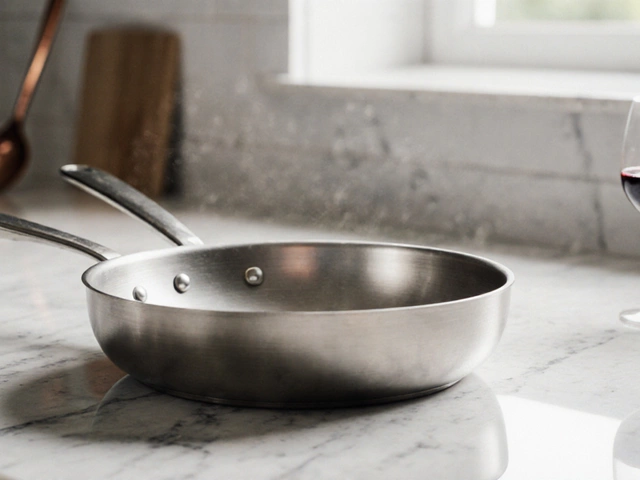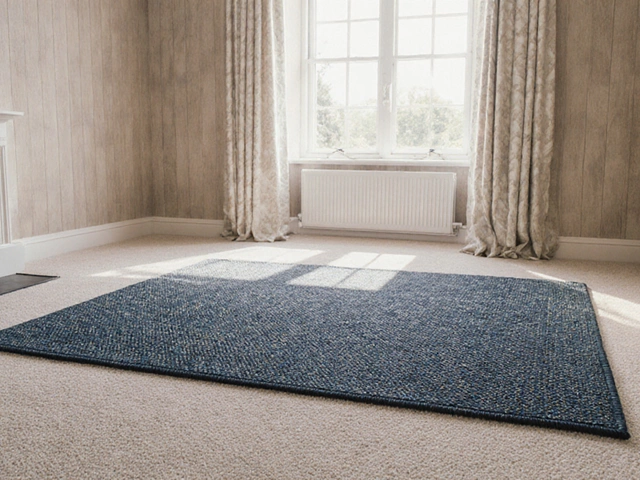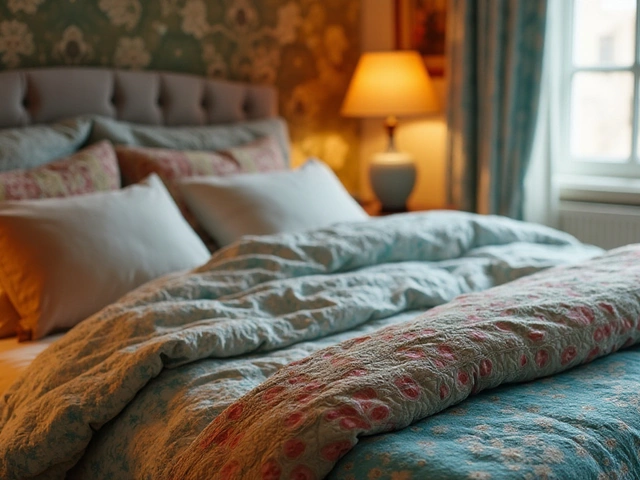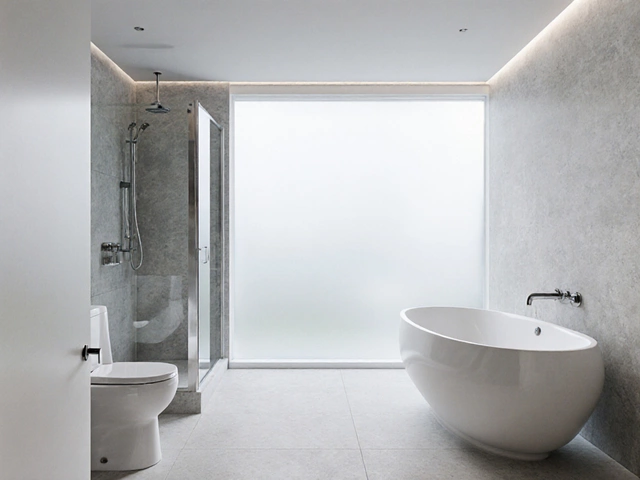Are Built-In Cabinets Still Trendy in Modern Homes?
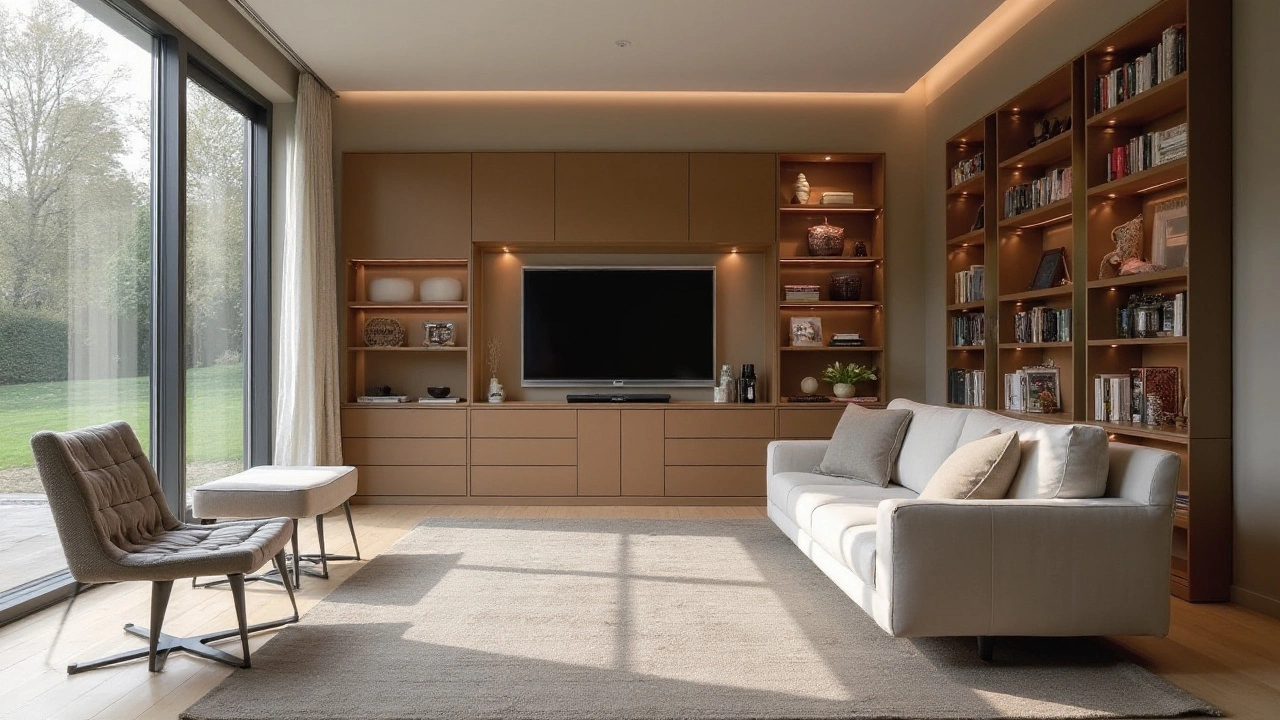
When it comes to home storage solutions, built-in cabinets often come into the spotlight. Known for their seamless integration and timeless charm, these cabinets have graced homes for generations. But with the ever-changing landscape of interior design, are they still a hit?
In today's world, where minimalism meets functionality, the question of built-in cabinets' relevancy in modern homes is worth exploring. While some view them as outdated, others see them as essential architectural elements. Let's dive into the world of built-in cabinets to uncover their current status and potential in contemporary decor.
- The Design Evolution of Built-In Cabinets
- Current Trends in Home Shelving
- Pros and Cons of Built-In Cabinetry
- Incorporating Modern Styles
- Creative Uses Beyond Storage
- Expert Tips for Timeless Appeal
The Design Evolution of Built-In Cabinets
Built-in cabinets have a fascinating history that goes hand-in-hand with the evolution of home architecture itself. Originating in European homes of the 17th century, early versions were often grand, wooden constructs reserved for the homes of the wealthy. These cabinets weren't just functional; they were a symbol of status, intricately carved and showcasing skilled craftsmanship that highlighted the wood’s natural beauty. Fast forward to the industrial revolution, the demand for mass-produced yet stylish furniture reflected a shift towards a more practical lifestyle, as homes began to feature more streamlined designs. The influence of this era is seen in the simplified, yet elegant cabinetry of Victorian homes, marking the beginning of built-ins as staples of household decor.
As we moved into the 20th century, houses were designed progressively with efficiency in mind. The post-war boom led to the rise of the suburban home, where built-in cabinets became crucial for utilizing space effectively. In kitchens, a place that was quickly becoming the heart of the home, built-in cabinets were essential for decluttering and organizing. By the mid-century modern period, these installations were characterized by sleek lines and bold forms, a stark contrast to their heavily detailed predecessors. Architectural trends like the open floor plan further shaped the role of built-ins, fostering a sense of seamlessness in interior spaces that persists in modern design philosophies.
In recent decades, the influence of minimalism has refined our approach to built-in shelving. Today’s design trends emphasize clean aesthetics and multi-functionality, with a return to using sustainable materials like bamboo and reclaimed wood. Designers are experimenting with different textures and finishes, blending the timeless look of traditional built-ins with modern touches. "The key to modern built-in cabinetry is to make them blend almost invisibly into the home’s structure, while still making a stylish statement," observes interior designer Clara Jeffries, encapsulating a notable trend that balances discretion with sophistication.
"Built-in cabinetry should walk the line between practical and stylish, never losing sight of its functional purpose while securing a place in modern aesthetic sensibilities." - Clara Jeffries
Homeowners now have a myriad of options when considering built-ins, from choosing bold paint colors that pop against neutral walls to favoring open-shelved designs that offer both accessibility and a chance to display personal artifacts. Interestingly, digital technology has started playing a role too. Smart cabinets with built-in lighting and charging stations are on the rise, evolving these traditional constructs into the tech-savvy tools demanded by contemporary lifestyles. This ongoing evolution reflects the enduring adaptability and charm of built-in cabinets, a feature that is likely to remain integral to home design for years to come.
Current Trends in Home Shelving
As we gaze around at the latest developments in interior design, it becomes clear that home shelving is having a moment. Gone are the days when storage was treated as an afterthought. Today, shelving solutions are a crucial part of any interior decor strategy, especially when aiming for both aesthetics and utility. One of the standout trends right now is the move towards more personalized and adaptable shelving options. Homeowners crave pieces that not only store their belongings but also tell a story and reflect their unique personalities. Customization has become king in the domain of shelving, where colors, materials, and configurations can be tailored to fit any space and style.
An intriguing trend is the incorporation of open shelving, especially in the kitchen and living room areas. This style gives rooms a spacious feel, promoting an airy environment while showcasing decorative items, books, or even kitchenware as part of the room's decor. In fact, the open concept allows for a greater flow of light, a much-loved feature in contemporary homes. A survey by Furniture Today highlighted that 58% of modern homes are opting for open shelving rather than traditional cabinetry, showcasing a shift towards creating more practical and visually striking spaces.
Technology also plays a significant role in shaping the landscape of home shelving. Smart or intelligent furniture isn't just found in couches or beds; shelving is catching up. Shelves with built-in lighting, charging stations, or even voice activation are no longer futuristic concepts but current realities. These tech-savvy adjustments make shelves more than just static pieces—they become dynamic parts of the home's ecosystem, interacting with other smart home devices. It's interesting to note how the convenience of technology isn't sacrificed for style, as these enhancements are often seamlessly integrated into the shelving design.
"Shelving is not just about storage anymore," shares interior designer Lara Spencer. "It's about creating a space that reflects your lifestyle, where every item has its place and purpose, blending utility with art."Additionally, eco-friendly shelving solutions have made their way into the trend spotlight. As more people become conscious of their environmental footprints, the demand for sustainable materials in home decor keeps rising. Shelving made from recycled wood, bamboo, or other eco-conscious materials caters to this growing need, offering a blend of style and sustainability. These shelves carry a warmth in design, often with a natural or rustic finish that complements a variety of home styles.
Another pattern gaining traction is the combination of metal and wood in shelving units. This balance creates a chic industrial look that has gained popularity in urban and modern settings. Whether it's sleek steel frames paired with rich wooden panels or brass fixtures combined with darker hues, this hybrid style emanates contemporary sophistication. It interlaces durability with an aesthetic appeal that can make any room feel both modern and homey. These materials also enhance the built-in cabinets, making them look cohesive with the home's overall style.
In summary, the current trends in home shelving reflect a move towards more open, smart, and sustainable solutions. With personalization leading the charge, these trends suggest that homeowners are more eager than ever to have storage solutions that speak to their tastes and needs while seamlessly integrating into their living spaces. Whether through technology, design, or material choice, shelving has evolved into a central component of modern home decor.
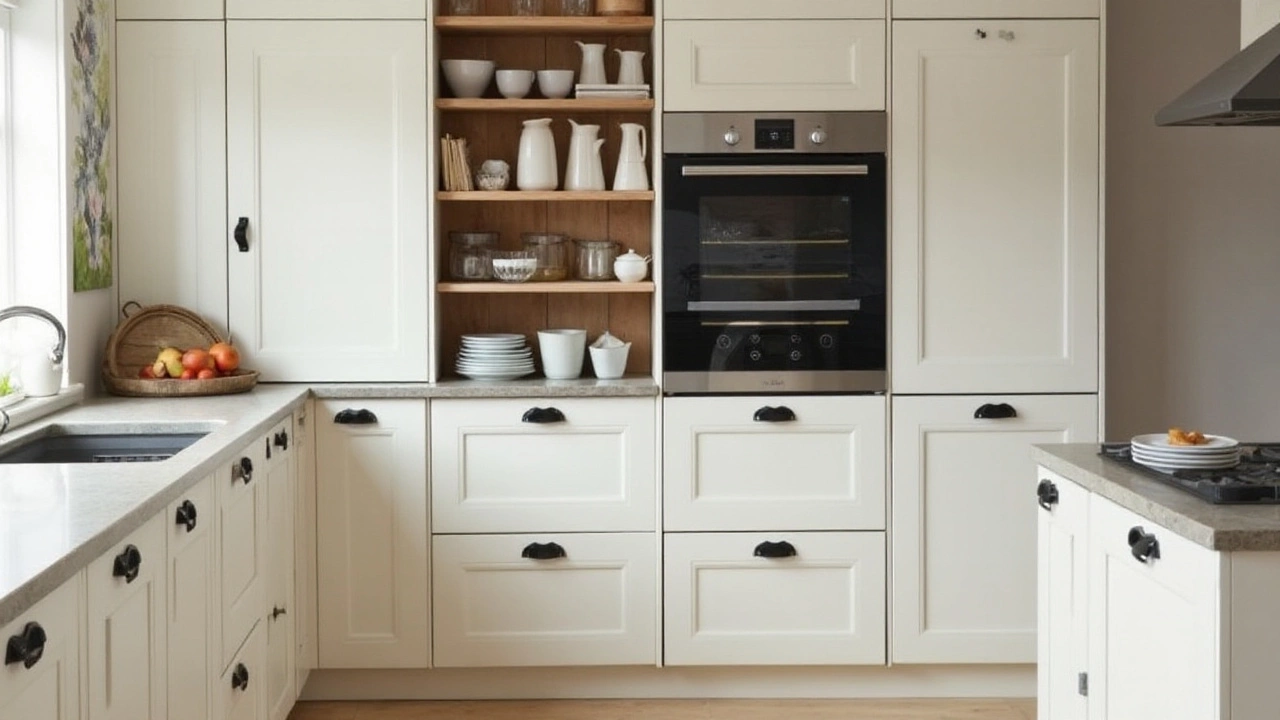
Pros and Cons of Built-In Cabinetry
Built-in cabinetry has long been heralded for its ability to marry both functionality and style in one tidy package. One of the most lauded benefits of built-in cabinets is their ability to maximize space efficiency. In tight homes or apartments where every square inch matters, built-ins make full use of often overlooked nooks and crannies. With their bespoke nature, these cabinets can be tailored to suit the specific needs of any room, whether it's a living room demanding sleek media storage or a kitchen in need of practical organization.
On the other hand, built-ins are not without their drawbacks. One potential downside is their permanence. Unlike freestanding furniture, built-in cabinetry is a fixed element of the home, which can pose challenges for those who relish frequent style changes. For renters or individuals likely to move, investing in such permanent fixtures may not be feasible. This permanence also means that should your taste evolve, updating the aesthetic can involve significant cost and effort. Additionally, the initial expense for custom-built cabinetry tends to be higher than stock options found in stores.
Despite these challenges, many homeowners find the benefits far outweigh the cons. Built-ins offer a cohesive, uncluttered look that many contemporary homes aspire to. With doors to hide the clutter and create sleek lines, they blend seamlessly into the existing architecture of a room. A survey conducted by the Home Improvement Research Institute indicated that over 60% of homeowners seeking renovations prefer built-ins for both aesthetic and practical reason.
Perhaps the enduring appeal of built-in cabinetry lies in its versatility. Whether you're aiming for a rustic library vibe with floor-to-ceiling bookcases or a clean, modern kitchen with integrated appliances, the possibilities are infinite. According to interior designer Jane Lockhart, "Built-in cabinets are more than just storage solutions. They are extensions of the home's character, reflecting the lifestyle of their owners."
Ultimately, the decision to install built-in cabinetry comes down to personal goals and the long-term vision for one's home. While it's essential to weigh the pros and cons, the enduring nature of these fixtures means they often pay dividends in both utility and style over the life of the property.
Incorporating Modern Styles
Incorporating modern styles into existing built-in cabinets requires a delicate balance of innovation and appreciation for what's already there. The world of home interiors is ever-evolving, continuously mixing the past's charm with future aspirations. Many homeowners today are rediscovering the virtues of built-in cabinetry, finding it a versatile canvas that perfectly complements both modern minimalism and eclectic vibrancy. One significant way to infuse cabinets with modern style is through their surface and hardware selections.
Shakers may always be in style when it comes to cabinet doors, but modern trends are leaning towards more creative expressions with materials. Glass inserts, often frosted or textured, introduce light and a touch of sophistication into spaces. These materials can give traditional built-in cabinets a contemporary twist by allowing them to reflect ambient light. By selecting sleek, understated handles, or even opting for touch-release doors, you make cabinetry feel modern, functional, and effortlessly sleek. Soft pastels and deep, moody colors are currently having their moment, dynamically impacting the way cabinets integrate into overall room aesthetics.
Interior decor isn't only about looks; it's about functional beauty that fits into our storytelling spaces. According to renowned interior designer Nate Berkus, "Your home should tell the story of who you are, and be a collection of what you love."
Nate Berkus emphasizes the importance of personal touch in design.By showcasing personal artifacts and experiences through built-in shelving, they become more than mere storage spaces – they narrate tales. These curated displays add personality and warmth, turning what could be utilitarian structures into vibrant focal points.
Technology also plays a vital role in modernizing built-in cabinets, with integrated lighting solutions becoming more affordable and versatile. LED lights, for instance, are perfect for highlighting spaces and can be installed discreetly to maintain a clean look. For the tech-savvy, consider adding outlets or USB charging ports inside your cabinetry to enhance convenience. Modern cabinetry can smartly hide bulky appliances and wires, which maintains an uncluttered look while meeting the high demands of contemporary life.
Many designers recommend the clever use of open shelving amidst these built-ins to keep rocking the modern style. Open shelving breaks the monotony and adds depth, allowing seamless transitions between closed storage and visible displays. This balance caters nicely to those who enjoy the aesthetics of having certain items on show, while still demanding the functionality of hidden storage. The implementation of mixed shelving not only resounds with current style sensibilities but also adapts to utility preferences, creating a compelling visual array.
To sum up, infusing your built-in cabinets with modern flair doesn't require a full remodel. It often means paying attention to the details, such as color, hardware, and the overall arrangement. With some strategic tweaks, these timeless fixtures not only remain relevant but can lead the way in defining a room's contemporary charm.

Creative Uses Beyond Storage
We often associate built-in cabinets primarily with storage, yet these versatile fixtures offer so much more. Beyond their traditional role of tucking away household items, they have the potential to transform spaces and redefine areas in unexpected ways. Imagine a book-lined wall that doubles as a discreet passageway to a hidden room, bringing a dash of mystery and intrigue to your home. Built-in cabinets can also serve as beautiful backdrops for living spaces, adding texture, depth, and character once only achieved by expensive renovations. The possibilities are endless. By reimagining the functional limits of built-in cabinetry, homeowners can craft spaces that not only accommodate possessions but also reflect personal style and creativity, adding a unique touch that stands out.
It's not solely about aesthetics; home decor enthusiasts seamlessly merge utility with art. Picture an elegant dining room where the buffet isn't just a cabinet but a cleverly integrated wine rack and stemware display. These uses can make a bold statement, turning a practical piece into a conversation starter at dinner parties. Similarly, in smaller homes or urban apartments where space is a prized commodity, built-in cabinets can cleverly conceal office equipment, turning a living room into a makeshift workspace without clashing with the room's ambiance. Here, built-in cabinets shine, emphasizing their dual role as beautiful design elements and essential storage solutions.
The adaptability of these cabinets lends them to a variety of innovative purposes. Decorating trends increasingly lean towards multi-functionality, and built-in cabinets fit right into this narrative. Consider the potential of a cabinet as a feature wall in a child's room, incorporating a chalkboard or magnetic surface for a playful, interactive space. Or in a kitchen, a built-in shelving unit might house not just cookware but also a mix of carefully curated art and mementos, melding style with sentiment. For those who love a bit of tech, cabinets can be cleverly designed to hide cables and routers, achieving a clean, clutter-free appearance while maintaining strong internet connectivity throughout the home.
"Efficiency is doing things right; effectiveness is doing the right things." This quote by management consultant Peter Drucker speaks volumes about our evolving view on house design. Built-in cabinets embody this efficiency and effectiveness, making them indispensable to modern living.As people become more conscious of environmental impacts and opt for sustainable living, built-in cabinetry offers an eco-friendly storage solution. They support a less-is-more mentality conducive to sustainability, often constructed from durable materials that withstand time and reduce the need for frequent replacements. Moreover, homeowners are now prioritizing smart storage by incorporating LED lighting within cabinets, enhancing visibility without escalating energy consumption.
In the realm of entertainment, built-in cabinets have found their niche. Crafting a personalized media center can transform a living room into a home theater, housing everything from TV screens to gaming consoles and sound systems in a neat, organized fashion. You might embed speakers directly into the cabinet design, maintaining sleek lines without sacrificing audio quality. These customizations are advantageous for tech lovers who crave immersive experiences yet prefer maintaining a clean aesthetic. The integration of these elements speaks to built-in cabinets' adaptability and enduring style, ensuring they remain relevant in the face of changing design paradigms.
As lifestyles change, the idea of what a home needs shifts too. The revival of board games and physical media can see cabinetry evolving to incorporate special compartments for these enduring pastimes, making family gatherings more accessible. This concept of transformation holds true outside typical living areas also. In garden rooms or conservatories, built-ins can store gardening tools or house collections of plants, turning what might be mundane into an organizational marvel. This multifunctional capacity is what makes cabinetry not only practical but a vital part of home evolution, underscoring the enduring appeal of built-in cabinets beyond their basic function.
Expert Tips for Timeless Appeal
The allure of built-in cabinets lies in their ability to blend seamlessly into any room while providing necessary storage. To achieve timeless appeal with these fixtures, experts often recommend focusing on both style and functionality. One key suggestion is to choose classic finishes and materials. Think about rich woods like walnut or oak for a traditional look and stay away from trendy materials that might quickly date your decor. Many interior designers advise sticking with whites, greys, or natural wood tones, as these colors tend to stand the test of time and complement a variety of furnishings and wall colors.
Maintenance is another crucial factor; well-maintained cabinetry looks fresh and inviting for years. Regular cleaning with gentle products not only keeps them shining but also extends their life. Some experts suggest using natural oils and waxes to maintain wood luster without the harshness of chemical polishes. Paying attention to detail, including the choice of hardware, can make a significant impact. Opt for classic or vintage handles and knobs which are less likely to go out of style, ensuring a continuous appeal. As design expert Jane Lockwood once said,
"Quality is remembered long after price is forgotten."Her words resonate especially in selecting cabinetry, a home feature expected to last and perform beautifully over time.
Design-wise, personalizing shelving trends to suit your lifestyle is also vital. Adjustable shelves or customizable sections allow homeowners to modify storage configurations according to their needs, keeping function at the forefront without sacrificing style. Smartly incorporating open shelves within closed cabinetry can break monotony, offering a blend of enclosed storage and display areas. This flexibility can accommodate various items, from books to decorative pieces, allowing home spaces to evolve without major overhauls. Additionally, environmental considerations play a growing role in today's cabinetry choices. Using sustainable materials and finishes is not just a trend but a wise practice. Consulting with a licensed professional to source eco-friendly options can be advantageous, not only for interior aesthetics but also for the planet.
A growing number of builders and homeowners consider lighting as a timeless addition to home decor. Built-in lighting elements, like under-shelf lights or LED strips, enhance visibility and accentuate the design without overpowering it. Correct placement and the choice of soft, warm lighting add a welcoming ambiance while also highlighting the uniquely crafted aspects of the built-in features. Finally, continuity is key—ensure that installed cabinetry reflects the broader architectural style of your home to maintain visual harmony. This cohesiveness often involves a thoughtful mix of textures and patterns, bringing together various elements in a unified fashion. Whether traditional or modern, the end goal is a seamless integration that fulfills storage needs while maintaining stylish elegance.

